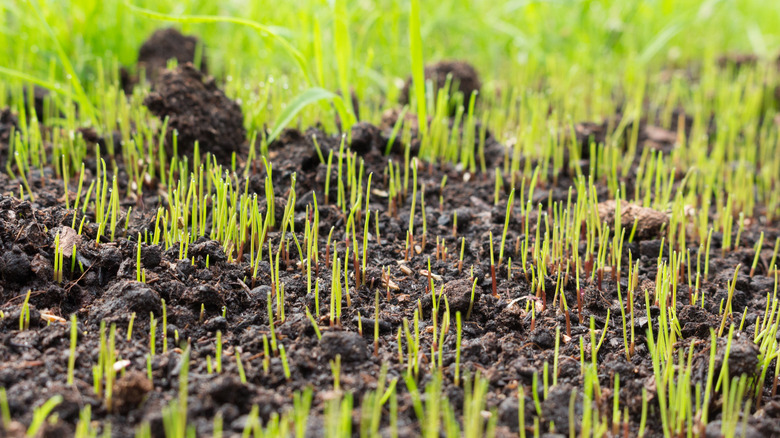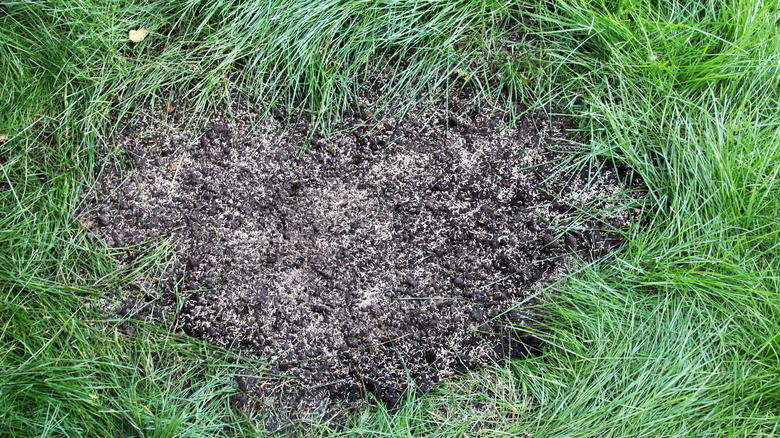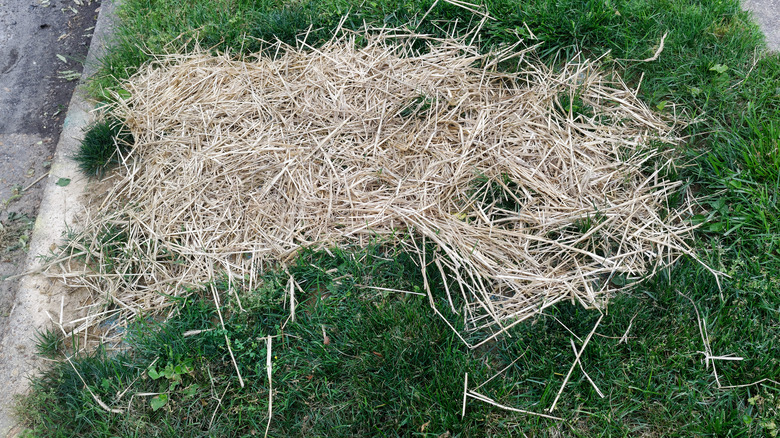Will Grass Seed Germinate On Top Of Soil? Here's What You Should Know
If you're looking at your lawn and notice a few bare patches which have developed during the warmer months, you might be wondering if grass seeds will germinate on top of the soil if you just throw them over the barren ground. You're probably thinking this could save you the trouble of reseeding the entire section, according to the recommended methods, especially if you're short of time and searching for a quick fix. The simple answer is that your grass seeds will germinate on top of the soil if they're provided with the right conditions. You see, grass seeds are opportunistic like most other species, and will sprout if they're given decent contact with the soil, ambient temperatures, and adequate moisture. But you could find germination is a bit sporadic and that's why it's a good idea to sow your seeds more thickly as you'll get some which won't sprout at all.
While there are both advantages and disadvantages to sowing grass seed on top of the soil, if you don't have the resources to sow them the conventional way by tilling the soil, this method is certainly worth trying. Just remember to pull any weeds before planting new grass seed as these will compete with the little seedlings for both water and nutrients.
Seed to soil contact is important when sowing seeds on top of the soil
For grass seeds to germinate effectively, they do need to have contact with the soil so the roots can burrow down and establish themselves. The reason for this is that the tiny embryo within the seed only has enough energy to produce one little root and one small shoot. The root then needs to absorb nutrients and moisture from the soil to allow the grass can grow. So, instead of just throwing the seeds on top of the ground and hoping for the best, it's a good idea to try and tamp them down so that they're touching the soil. Often, a gentle watering which doesn't dislodge the seeds will help to push them a bit deeper or at least move the soil around them. You also need to keep the ground moist during the germination period as this will assist the seed to sprout.
You might even want to use a soil loosener or liquid aeration product like Revive. This is a liquid you just mix with water and spray onto the ground. It will help to soften the soil and create air pockets. This has the benefit of making it easier for the sprouted root to work its way into the ground and establish a solid root system. You'll also find that lightly raking in the seeds after you've scattered them should improve the seed-to-soil contact.
Soil temperature is vital for grass seed germination
Before you go ahead and scatter grass seed over the bare patches of your lawn, you need to understand that the right soil temperature is important if you want them to sprout. The optimum temperature range for successful germination is between 59 and 86 degrees Fahrenheit, depending on the type of grass you wish to grow. If the soil is cooler, the seeds will just lay dormant until it warms up, but they could get picked up by birds or get blown away if they're left exposed on top of ground. So, getting the timing right is one of the best tips and tricks for growing grass from seed.
Another thing you might want to consider is to lightly cover the sown area with a thin layer of mulch or straw. This should stop birds from stealing the seed and also assist with moisture retention. There are also plenty of cheap ways to spread grass seed without the help of lawn tools that you should consider.


